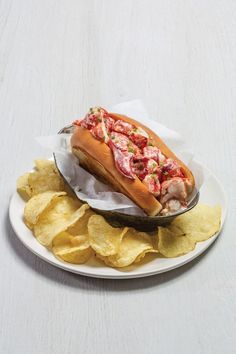Technological innovation world tide
The New York Times in the United States pointed out in a recent report that plant protein meat is gradually being accepted and respected by consumers. And as sophisticated fish alternatives begin to attract investment and gradually find their way into restaurants in the U.S. and elsewhere, those who continue to focus on fish-free seafood say the industry may be on the verge of an outbreak, using plant- or lab-made products Fish or seafood promises to be the next frontier in the food sector.
Consumers in some countries are increasingly aware of the environmental concerns of the seafood industry, including overfishing and the health risks posed by some seafood products. In addition, some start-ups are now better at imitating the taste and texture of fish (an important consideration for non-vegetarians), prompting an increasing presence of artificial fish on the dinner table.
Joshua Katz, an alternative protein industry analyst at McKinsey & Company, said that these foods are no longer the replacement for fish sticks, and plant-based seafood products have great market potential.
"It's just a smarter way to make seafood," said Mitre Goske, head of the Asia-Pacific region for the American Institute of Quality Food in Singapore.
While U.S. plant-based seafood accounts for only 0.1 percent of the country’s seafood sales, less than the 1.4 percent share of plant-based meat substitutes in the U.S. meat market, the global seafood Product-replacement businesses received $83 million in investment, up from $1 million three years ago. Moreover, as of June this year, 83 companies worldwide were producing seafood substitutes, nearly triple the number in 2017.
Of the 83 companies, 65 focus on producing and manufacturing plant-based products; six specialize in producing protein through fermentation, including a French start-up that produces smoked salmon from microalgae, and a dozen others are developing laboratory seafood.
Plant-based fish products are in their infancy
Impossible Foods is a leader in the alternative protein industry and has been working on developing fish-free "fish meat" for many years. However, company spokeswoman Jessica Appel said the company has yet to produce alternative aquatic products.
But some big companies have already done it. California seafood giant Wasp Foods, for example, said last year that it was partnering with Pennsylvania-based plant-based seafood company Harvest, which sells products such as artificial fish fillets and crab cakes at Whole Foods and other retailers.
There are also a number of start-ups developing alternative fish proteins that mimic raw fish, including Culiana, which has restricted the sale of a plant-based sushi-grade tuna through the Poke Bar chain in Los Angeles and across the United States. While breaded faux fish fillets have been selling well so far, the industry needs to improve products that mimic raw fish if it hopes to attract non-vegetarians, said chief executive Jacek Pruss. . "The biggest challenge we face is: how to better recreate the texture and texture of seafood," he said.
Of the 65 companies currently producing plant-based seafood, 47 are outside the United States, according to the Quality Food Institute. Industry insiders say the Asia-Pacific region will grow its market share significantly, as it consumes more than two-thirds of the world's fish, according to United Nations estimates.
United Foods of Thailand, one of the world's largest processors of traditional tuna cans, said in March that it invented OMG meat to target "half meat and half vegetarians" who want to reduce their carbon footprint. In addition, startup company Novelty has been selling algae-based fermented alternative fish products in China since last year.
The road to laboratory cultivation is long and difficult
The next field is lab-grown seafood, edible products grown in the lab from real cells, but the technology is still a long way from retail and widespread commercialization.
Industry insiders explained that from a technical point of view, vegetable protein meat is mainly produced by separating protein from soybeans and other beans, adding various seasonings to bring out the taste like meat, and it does not require much investment to complete production. However, the meat grown from cells is cultivated with animal cells, which involves the theory of tissue engineering in the field of biological high technology, and there are still many technical barriers. From the current perspective of the entire industry, the commercialization of cell cultured meat is a long process and the cost is higher than that of vegetable protein meat.
Another big challenge in developing lab-grown seafood is that scientists often don't know as much about marine species as they do about mammals, says Freya Mehta, a German scientist specializing in cellular agriculture. In a few countries, the government has not issued corresponding testing and regulatory policies; compared with vegetable protein meat, the related industry chain of cell cultured meat is not perfect and mature enough.
Later this year, more startups with lab-grown proteins may gain U.S. regulatory approval, Goske said. The U.S. FDA said in October that products containing cultured seafood cells "may soon enter the U.S. market."
In California, San Diego-based Balealu and San Francisco-based Wildtype have announced that they will begin commercializing laboratory-grown seafood products in the near future; Singapore-based meat and seafood company Shiok Meats has also said it plans to begin commercializing this product next year. class products.

